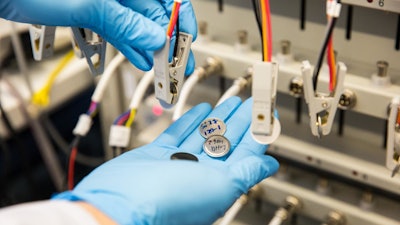
With people wanting to use smaller electronic devices, smaller energy storage systems are needed. Researchers at Aalto University in Finland have fabricated electro-chemically active organic lithium electrode thin films, which help make micro-batteries more efficient. Researchers used a combined atomic/molecular layer deposition (ALD/MLD) technique, to prepare lithium terephthalate, a recently found anode material for a lithium-ion battery.
When micro-batteries are manufactured, the key challenge is to make them able to store large amounts of energy in a small space. One way to improve the energy density is to manufacture the batteries based on three-dimensional, micro-structured architectures. This may increase the effective surface inside a battery. However, the production of materials fit for these has proven to be very difficult.
"ALD is a great method for making battery materials fit for 3D micro-structured architectures. Our method shows it is possible to even produce organic electrode materials by using ALD, which increases the opportunities to manufacture efficient micro-batteries," says doctoral candidate Mikko Nisula from Aalto University.
The researchers' deposition process for Li-terephthalate is shown to comply well with the basic principles of ALD-type growth, including the sequential self-saturated surface reactions, which is a necessity when aiming at micro-lithium-ion devices with three-dimensional architectures. The as-deposited films are found to be crystalline across the deposition temperature range of 200 - 280 degrees Celsius.
This is a highly desirable trait for an electrode material, but rather unusual for hybrid organic/inorganic thin films. An excellent rate capability is ascertained for the Li-terephthalate films, with no conductive additives required. The electrode performance can be further enhanced by depositing a thin protective LiPON solid-state electrolyte layer on top of Li-terephthalate. This yields highly stable structures with a capacity retention of over 97 percent after 200 charge/discharge cycles at 3.2 C.
The study about the method has now been published in the latest edition of Nano Letters.






















